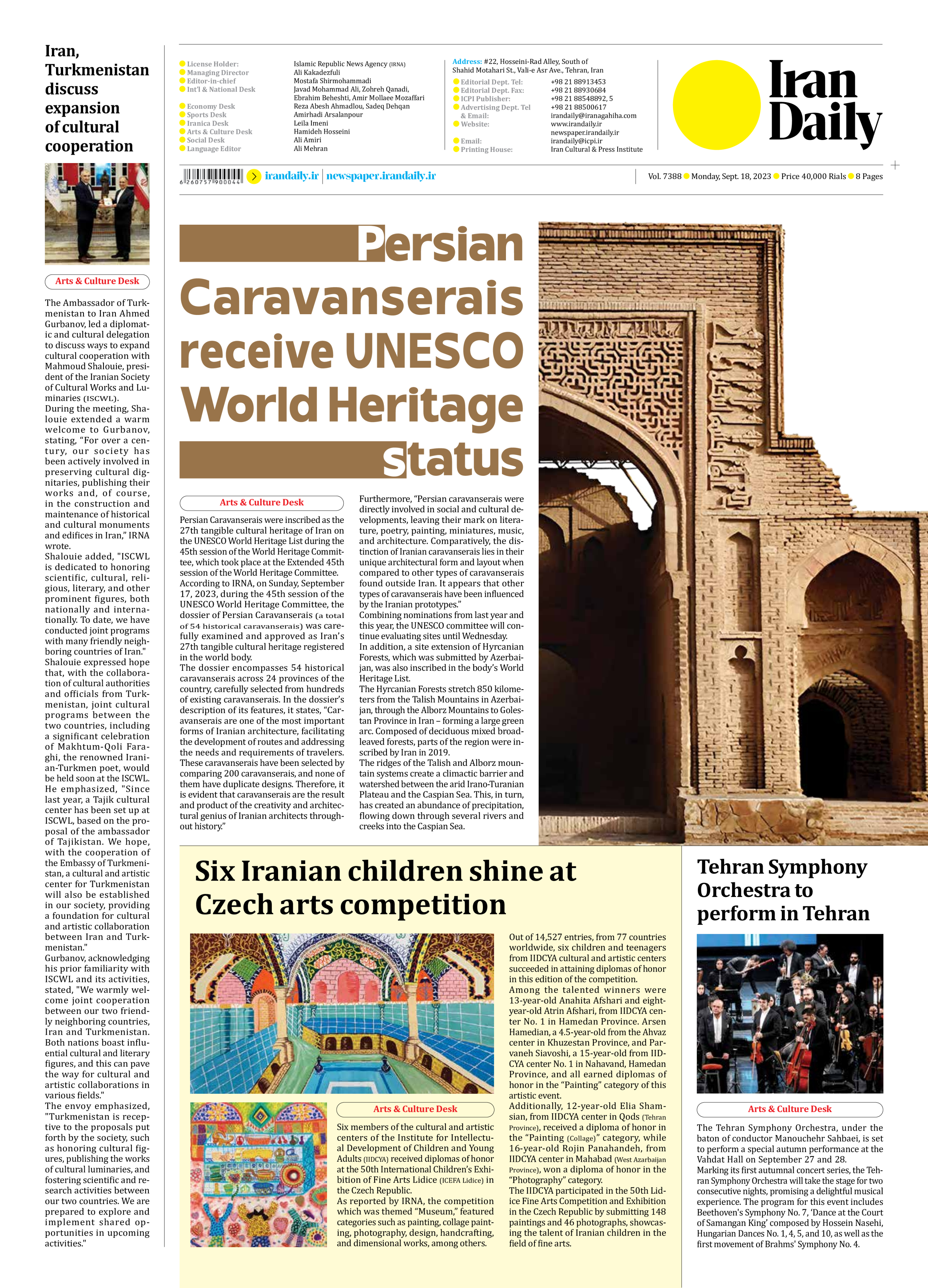
Persian Caravanserais receive UNESCO World Heritage status
Persian Caravanserais were inscribed as the 27th tangible cultural heritage of Iran on the UNESCO World Heritage List during the 45th session of the World Heritage Committee, which took place at the Extended 45th session of the World Heritage Committee.
According to IRNA, on Sunday, September 17, 2023, during the 45th session of the UNESCO World Heritage Committee, the dossier of Persian Caravanserais (a total of 54 historical caravanserais) was carefully examined and approved as Iran’s 27th tangible cultural heritage registered in the world body.
The dossier encompasses 54 historical caravanserais across 24 provinces of the country, carefully selected from hundreds of existing caravanserais. In the dossier’s description of its features, it states, “Caravanserais are one of the most important forms of Iranian architecture, facilitating the development of routes and addressing the needs and requirements of travelers. These caravanserais have been selected by comparing 200 caravanserais, and none of them have duplicate designs. Therefore, it is evident that caravanserais are the result and product of the creativity and architectural genius of Iranian architects throughout history.”
Furthermore, “Persian caravanserais were directly involved in social and cultural developments, leaving their mark on literature, poetry, painting, miniatures, music, and architecture. Comparatively, the distinction of Iranian caravanserais lies in their unique architectural form and layout when compared to other types of caravanserais found outside Iran. It appears that other types of caravanserais have been influenced by the Iranian prototypes.”
Combining nominations from last year and this year, the UNESCO committee will continue evaluating sites until Wednesday.
In addition, a site extension of Hyrcanian Forests, which was submitted by Azerbaijan, was also inscribed in the body’s World Heritage List.
The Hyrcanian Forests stretch 850 kilometers from the Talish Mountains in Azerbaijan, through the Alborz Mountains to Golestan Province in Iran – forming a large green arc. Composed of deciduous mixed broadleaved forests, parts of the region were inscribed by Iran in 2019.
The ridges of the Talish and Alborz mountain systems create a climactic barrier and watershed between the arid Irano-Turanian Plateau and the Caspian Sea. This, in turn, has created an abundance of precipitation, flowing down through several rivers and creeks into the Caspian Sea.







